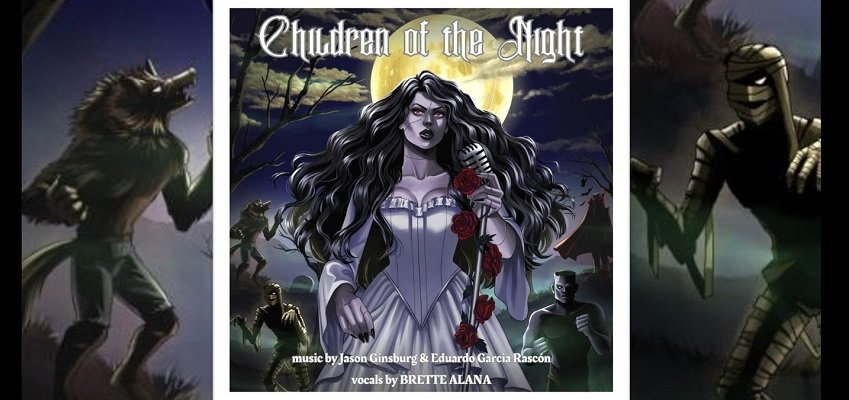The Munsters: Is Herman Munster Really Frankenstein’s Monster? (Well…)
Will the real Frankenstein’s Monster please stand up?
Part of a series celebrating the many versions of Frankenstein’s Monster
(Original version of this article published January 2022)
On classic 1960s sitcom The Munsters, Herman Munster is the patriarch of the clan—and the spitting image of Universal Studios’ Frankenstein’s Monster. But is he the Frankenstein’s Monster—the same one from the classic Universal Monsters film series?
Find out all the details by watching this episode of the Monster Complex show! (Even more info is available below the video.)
Is Herman Munster Really Frankenstein’s Monster?
Related to stuff I talked about in the video:
Who Is Herman Munster?
Herman is father of the Munster family, husband of Lily Munster (vampire), father of Eddie Munster (werewolf), son in law of Grandpa (Count Dracula), uncle of Marylin Munster (who passes for human, poor thing).
Herman was portrayed by Fred Gwynne in the original series (1964-1966), and in later revivals and reboots by Richard Long in Mini-Munsters (1973), John Schuck in The Munsters Today (1988–1991), Edward Herrmann in Here Come the Munsters (1995), Sam McMurray in The Munsters’ Scary Little Christmas (1996), and Jerry O’Connell in 1313 Mockingbird Lane (2012).
He was built in Germany by Dr. Frankenstein in the mid to late 1800s. In the series, the family lives in a broken down mansion at 1313 Mockingbird Lane in the small town Mockingbird Heights. Herman works at the funeral home Gateman, Goodbury, and Graves. (Fun sidenote: Herman’s boss is played by horror film icon John Carradine.)
What’s the deal with Dr. Frankenstein?
Although Dr. Victor Frankenstein, the German scientist responsible for creating Herman, is never seen on the show, he is often mentioned in conversation. In fact, Herman sings about him in “Will Success Spoil Herman Munster?”
Dr. Frankenstein had a friendship or working relationship with Count Dracula—also known as Grandpa, Herman’s father-in-law. In “Just Another Pretty Face,” Grandpa discovers he has a copy of Herman’s original blueprint, autographed by Dr. Frankenstein.
Herman’s Twin, Charlie Munster
We first discover there’s more than one Frankenstein’s Monster in “Knock Wood, Here Comes Charlie.” Charlie Munster—Herman’s twin brother—is a con man who puts on a sophisticated air. In that episode, he even tries to con his own family by selling them a phony machine that he claims can extract uranium from sea water.
Herman’s Other Identical Brother, Johann
We discover there’s another Frankenstein’s Monster in “A Visit from Johann.” Dr. Frankenstein IV, the great-grandson of the original Dr. Frankenstein, arrives with Johann, whom he found wandering in the woods in Germany—and who appears to be the same Monster from the original Universal Monsters movies.
Although he is played by Fred Gwynne (1960s sitcoms loved the mixups caused by identical characters), Johann’s behavior indicates he’s the same Frankenstein’s Monster portrayed in the movies originally by Boris Karloff. He’s even dressed the same way he appears in Son of Frankenstein.
ABOUT THE MUNSTERS
In the pantheon of sitcom families, there are few (if any) as memorable as The Munsters. With 70 episodes airing on the CBS network across two seasons (1964-1966), the show featured Herman Munster (a patchwork Frankenstein’s Monster) and Lily Munster (the daughter of Count Dracula), portrayed by Fred Gwynne and Yvonne De Carlo, Grandpa (Al Lewis), Eddie Munster (Butch Patrick), a werewolf who just wants to be a typical, all-American boy, and Marilyn Munster (first by Beverley Owen, then Pat Priest). Despite airing only two seasons, the show has continued to delight viewers through reruns and a series of reunions, revisits, and reboots.
How to stream, rent, or buy The Munsters
Digital media
Watch The Munsters Streaming Online (Peacock TV)
Fandango at Home (buy streaming)
Justwatch (streaming guide—including whether there are FREE options!)
Physical media
ABOUT THE ORIGINAL FRANKENSTEIN
Frankenstein; or, The Modern Prometheus by Mary Shelley, published in 1818, is a novel full of grief and longing and the struggle with isolation, as well as the hubris of climbing the ladder of science without regard for morality or the ramifications (and responsibility) of unexpected success, Shelley’s “Frankenstein” has survived 200 years of creative adaptations and intellectual discussions. The version of the monster in the original novel is quite different from what we often see in adaptations—he is articulate, conflicted, and actually looks quite different than we’ve been trained to assume.
Mary Shelley’s novel Frankenstein was written to meet a challenge to “write a ghost story.” When Mary Shelley began work on her story, she was only 18 years old.
The novel Frankenstein has endured because it represents so much to so many. A classic of western literature, a rousing story of terror, a Gothic romance, a tragedy—it is also considered one of the first (if not the first) works of science fiction.
In the more than 200 years since its first publication, the legend of Frankenstein has been recounted, remixed, retread, and rebooted into so many formats. The monster of Frankenstein has been adapted in books, films, television, cartoons, comics, audio dramas, stage productions, theme park attractions, and more.
ABOUT UNIVERSAL MONSTERS
From the 1920s through to the 1950s, Universal Monsters was the go-to place for classic monster movies. Over the years, as they latched onto franchise characters that could carry a film series, soon came the urge to have the various monsters meet up.
As such, they found ways to combine monster movie icons Dracula, Frankenstein’s Monster, and the Wolf Man, into a single narrative. It wasn’t always great, but it sure was fun.

















Looking for more options to watch classic monster movies like Frankenstein or Godzilla? Offering a bunch of websites with movies and TV shows—including stuff you can watch free, rent or buy.